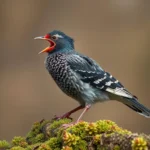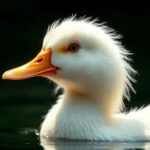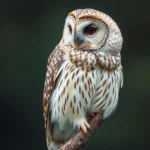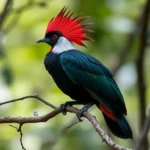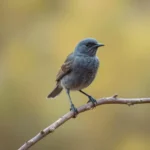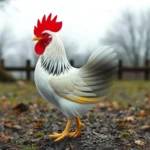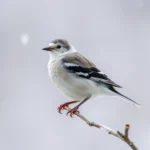The Laughing Kookaburra: Nature’s Harbinger of Joy and Wisdom
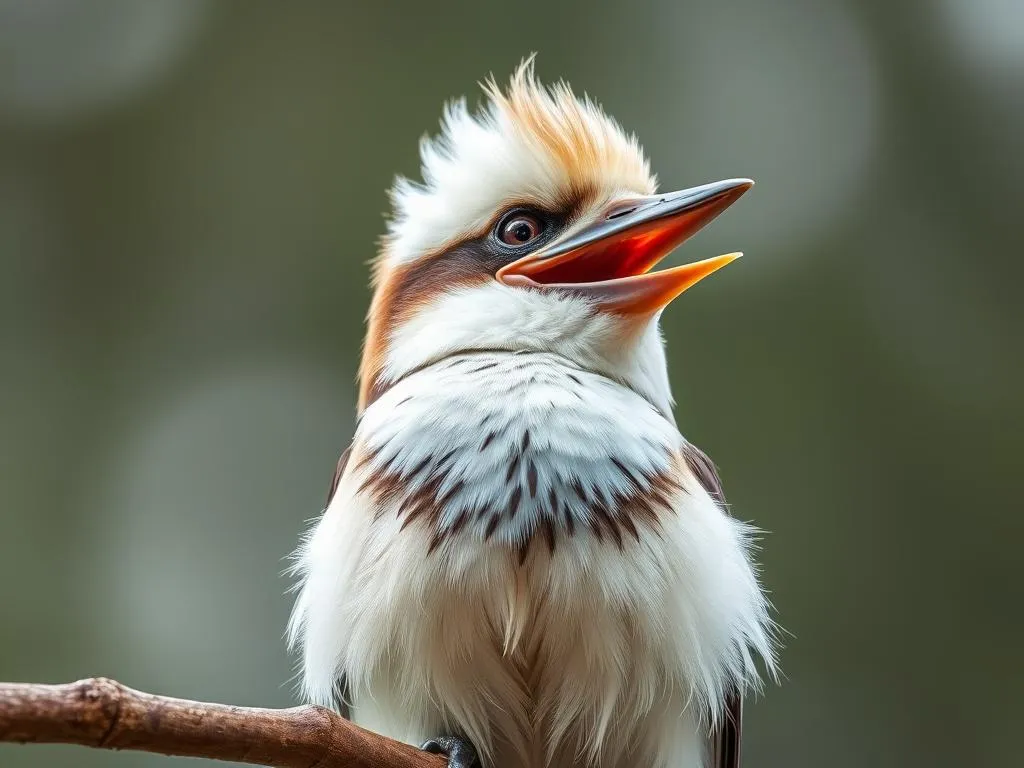
Disclaimer: Some images on this website are AI-generated artworks and may not accurately represent real animals.
The laughing kookaburra is not just a bird; it is a vibrant symbol of joy, community, and wisdom. This unique creature, known for its iconic call, has captured the hearts of many and has profound meanings in various cultures. This article delves deep into the essence of the kookaburra, exploring its physical traits, habitat, behaviors, and the rich symbolism it embodies.
Understanding the Laughing Kookaburra
Physical Characteristics
The laughing kookaburra (Dacelo novaeguineae) is easily recognizable due to its distinctive features. Below is a table highlighting some key physical characteristics:
| Feature | Description |
|---|---|
| Size | Approximately 28-42 cm in length |
| Weight | 0.3-1.2 kg (0.7-2.6 lbs) |
| Plumage | A mix of brown, white, and cream |
| Beak | Long, strong, and pointed |
| Eyes | Bright blue or brown |
With a robust body and a large head, the kookaburra often stands out in its natural environment. Its plumage, a blend of earthy tones, helps it camouflage among the trees and foliage.
Habitat and Distribution
The laughing kookaburra is native to Australia and New Guinea. They thrive in a variety of habitats, including eucalyptus forests, woodlands, and even suburban areas. Their adaptability has allowed them to spread beyond their original range, making them a common sight across Australia and in some parts of New Zealand.
These birds are often seen perched on branches, scanning their surroundings for potential prey. Their preference for open areas allows them to hunt effectively, whether they are on the lookout for insects, small mammals, or reptiles.
Behavioral Traits
Kookaburras are social birds, often found in family groups. They communicate through a series of calls that sound like laughter, hence their name. This vocalization serves multiple purposes, including marking territory and strengthening social bonds within the group.
Feeding is a communal activity, with kookaburras working together to hunt. They are known for their unique hunting technique, which involves sitting quietly before suddenly swooping down to catch their prey. This cooperative behavior not only enhances their hunting success but also reinforces family ties, making them a great example of community living in the avian world.
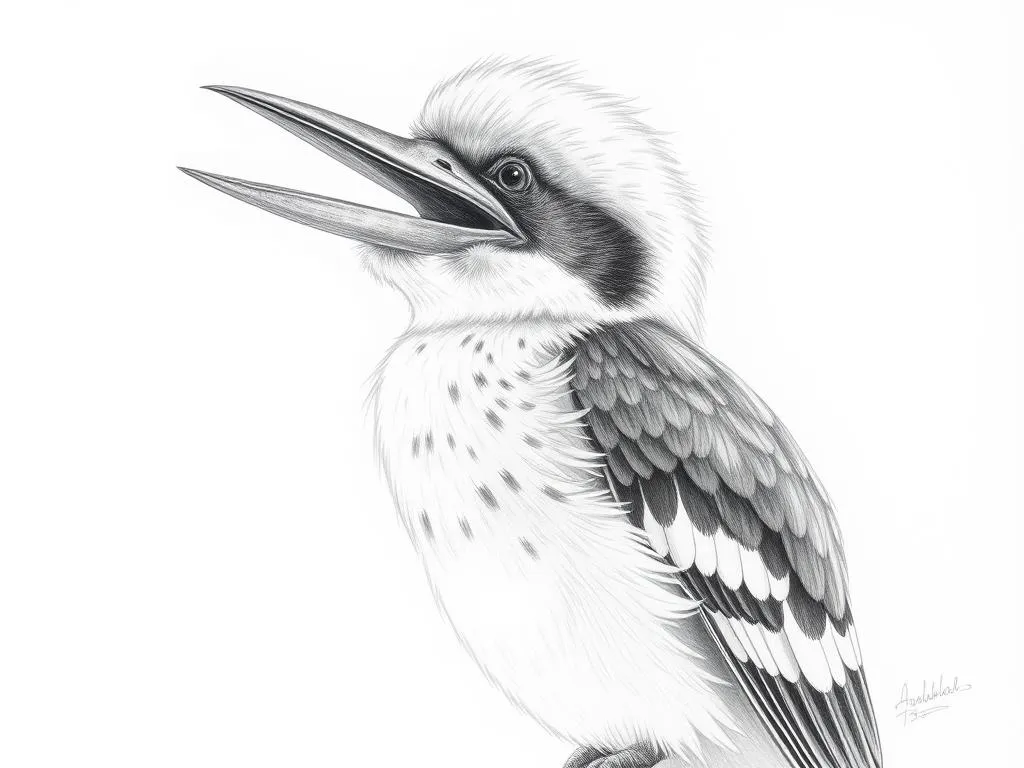
Symbolism & Spiritual Meaning
Joy and Laughter
The laughing kookaburra is often associated with joy and laughter. Its unmistakable call is a cheerful sound that resonates through the Australian bush, evoking feelings of happiness and contentment. This connection to joy has led many to view the kookaburra as a symbol of light-heartedness and merriment.
In various cultures, laughter is seen as a universal language, transcending barriers and bringing people together. The kookaburra embodies this spirit, reminding us of the importance of finding joy in our lives and sharing it with others.
Community and Family
Kookaburras are not just solitary creatures; they thrive in family units. Their strong social bonds reflect the value of community and togetherness. In many cultures, the kookaburra is seen as a representation of family values and the importance of supporting one another.
The cooperative nature of kookaburras serves as a reminder that we, too, can benefit from fostering strong connections with our families and communities. Through collaboration and mutual support, we can navigate the challenges of life with greater ease and resilience.
Wisdom and Insight
In addition to joy and community, the laughing kookaburra symbolizes wisdom and insight. In many Indigenous Australian cultures, the kookaburra is regarded as a wise observer, offering guidance and clarity. Its ability to watch and listen before acting serves as a lesson in patience and careful consideration.
The kookaburra’s keen sense of awareness and its ability to adapt to different environments highlight the importance of being attuned to our surroundings. This awareness is essential for making informed decisions and understanding the world around us.
Laughing Kookaburra in Dreams
Interpretation of Dreaming About Kookaburras
Dreams featuring the laughing kookaburra can carry significant meanings. Encountering this bird in your dreams may symbolize a need for joy and light-heartedness in your waking life. It could be a reminder to embrace laughter and seek out moments of happiness.
Additionally, the kookaburra can represent the importance of community and connection. Dreaming of these birds may suggest that you should nurture your relationships or seek support from loved ones during challenging times.
Messages from the Spirit World
In many spiritual beliefs, animals appearing in dreams serve as guides or messengers. The kookaburra, with its joyful call and communal nature, may signify that positive changes are on the horizon. It can encourage you to trust your instincts and embrace the joy that life has to offer.
The presence of the kookaburra in dreams can also serve as a reminder to maintain a sense of humor and perspective. When facing difficulties, the kookaburra encourages you to find laughter in the situation, promoting resilience and a positive outlook.
Significance of Laughter in Dreams
Laughter plays a crucial role in our emotional and psychological well-being. In dreams, laughter often represents freedom from stress and the ability to enjoy life. The kookaburra’s association with laughter amplifies this symbolism, reminding us to prioritize joy even amidst challenges.
| Dream Symbol | Meaning |
|---|---|
| Kookaburra Laugh | Embracing joy and light-heartedness |
| Family Gathering | Importance of community and support |
| Observing Nature | Need for awareness and clarity |
| Playfulness | Encouragement to let go of stress |
Understanding the significance of these symbols can help us navigate our emotions and relationships more effectively, allowing us to cultivate a positive mindset.
Modern Interpretations
Cultural Significance
The kookaburra holds a special place in Aboriginal culture, where it is often viewed as a totem animal. Its laughter is believed to be a call to the spirits, inviting joy and harmony into the community. In modern society, the kookaburra continues to symbolize happiness and unity, often appearing in various forms of media and art.
As a cultural icon, the kookaburra serves as a reminder of the deep connections between nature, community, and individual well-being. Its presence in art and literature highlights the importance of celebrating joy and the bonds that unite us.
Art and Literature
The laughing kookaburra has inspired countless artists, poets, and storytellers. Its laughter and vibrant personality make it a popular subject in Australian folklore. From children’s books to contemporary poetry, the kookaburra is often depicted as a joyous figure, symbolizing the beauty of nature and the importance of laughter.
In visual arts, the kookaburra’s striking appearance and unique behavior have been captured in various mediums, showcasing its role as a beloved Australian icon. These representations serve to reinforce the connection between humans and nature, emphasizing the lessons we can learn from our feathered friends.
Kookaburra as a Totem Animal
For many, the kookaburra serves as a spiritual guide or totem animal. Embracing the kookaburra as a spirit animal can inspire individuals to cultivate joy, nurture community, and seek wisdom. It can encourage a playful outlook on life, reminding us to find humor in everyday situations.
People who identify with the kookaburra often emphasize the importance of laughter and connection in their personal journeys. This connection can serve as a source of strength and motivation, guiding them toward a more fulfilled and joyful life.
Key Takeaways
- Embracing joy is essential: The kookaburra teaches us the importance of laughter and finding happiness in our daily lives.
- Community values matter: Kookaburras highlight the significance of strong social bonds and support systems.
- Wisdom in nature: The kookaburra encourages us to observe and learn from the world around us, fostering awareness and insight.
Through these lessons, the kookaburra inspires us to live more joyfully and connectedly, enriching our lives with its vibrant spirit.
Conclusion
The laughing kookaburra is not just a bird; it is a powerful symbol of joy, community, and wisdom. Its cheerful call resonates in the hearts of many, reminding us of the importance of laughter and connection. As we reflect on the significance of this remarkable bird, let us embrace the lessons it offers, seeking joy in our lives and nurturing the bonds that bring us together.
In a world that often feels overwhelming, the kookaburra encourages us to connect with nature and each other, celebrating the beauty of life and the power of laughter. By doing so, we can cultivate a deeper appreciation for the world around us and live more fulfilling lives.
